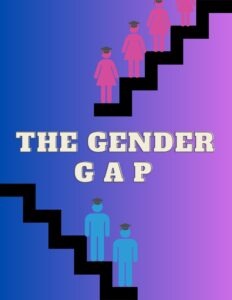
The ever-widening gender gap continues to increase at Florida A&M University. According to the FAMU Office of Institutional Research, out of 9,228 students, females make up 67% of the student body, while males make up 33%. The data also says that there has been a one percent increase since 2021.
Nonetheless, FAMU is not the only HBCU with a gender gap within the student body. The divide in academic performance and enrollment between women and men has been steadily extending each year. The gender difference is apparent at other universities as well.
According to the data from U.S. News and World Report, Prairie View A&M University also has about 67% females enrolled and 33% males. Similarly, Bethune-Cookman University’s student population consists of 62.8% females and 37.2% males.
Women are currently dominating the enrollment of higher education at HBCUs.
Women did not always have the upper hand in this historic gender imbalance. The U.S. Department of Education’s data shows that in 1950 men enrolled in higher education were double the number of women registered.
For the first time in history, women exceeded men’s enrollment in 1979. The data also showed that women went from 53% of the student body in 1976 to 60.8% in 2000 and 23 years later, they still keep the lead in the gender gap.
FAMU student Kennedy Parks, an agricultural business major, says she thinks the statistics are “absolutely” accurate.
“I do think this is a problem for FAMU because Black men are underserved educationally and systematically,” Parks said. “I think the resolution could be more recruiting, specifically for Black men, that could help.”
A FAMU public health student, Mehki Francois, had a different opinion. Francois said he surprisingly has not noticed the gender gap on FAMU’s campus.
“I don’t think that it would be a problem because everyone that chooses to be a part of FAMU, and do what they can to stay there, will keep the tradition of FAMU alive,” Francois said. “The only thing that could be done is for FAMU to promote more often to find more prospects.”
Whether it’s a recruitment or systematic situation, the fact still remains that women are surpassing men in educational achievements and college enrollment rates. College fairs and high school visits may not be enough to close the gender gap between women and men.
The striking gender gap could possibly be an issue in the next few years. FAMU and other universities may need to rethink their recruitment strategies.